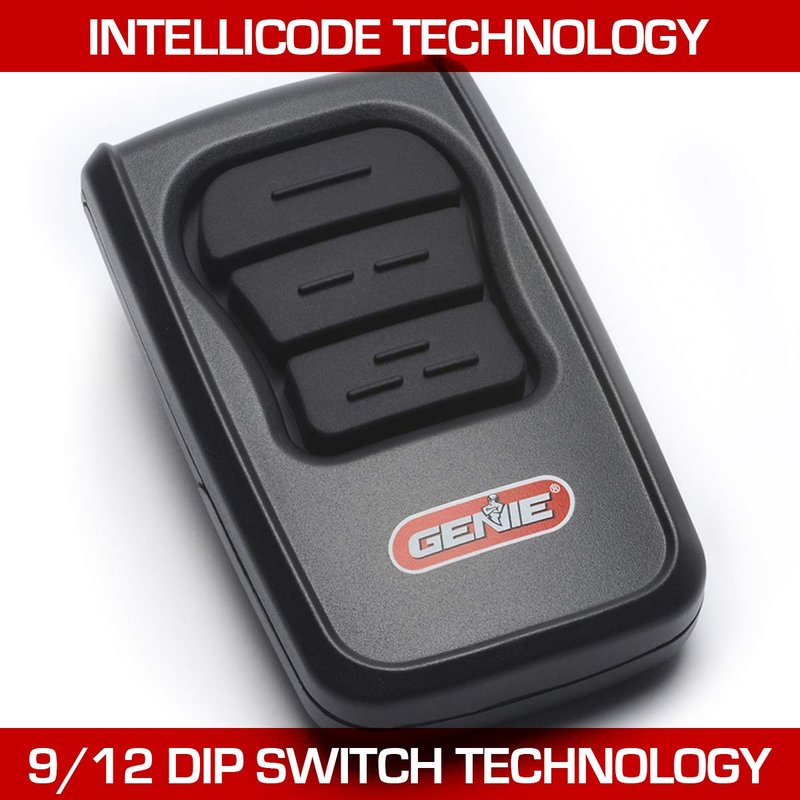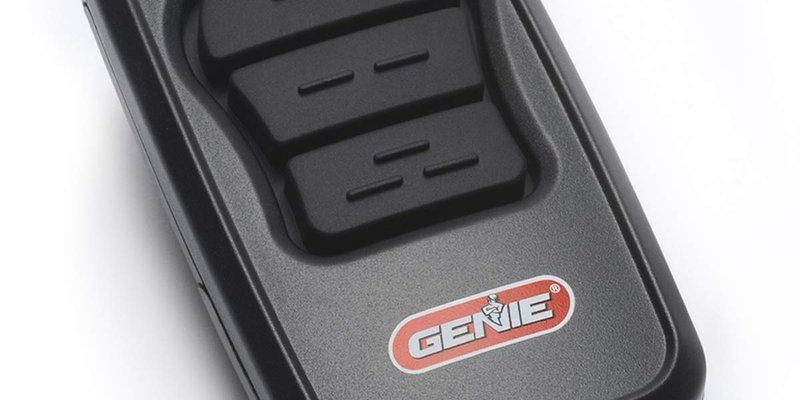
If you own a Genie system, you might wonder if syncing the remote with the wall-mounted keypad is as easy as pressing a few buttons—or if you’re in for a tech headache. Maybe you lost your remote, or maybe the neighbor’s dog chewed it up (it happens). Understanding how these devices talk to each other, and what your options are, can save you lots of time and stress. Let’s break it down, one step at a time.
How Genie Garage Remotes and Keypads Communicate
Before diving into sync features, let’s look at how these gadgets actually talk. Think of your **Genie garage remote** and keypad as two friends with walkie-talkies—they need to be on the same channel, or they’ll just get static. Both devices use radio frequency (RF) signals to “speak” to your garage door opener’s receiver, but they don’t send the same kind of message.
Here’s the deal: the remote typically uses rolling code technology for security. Every time you press the button, it sends a unique code—like a secret handshake—to the opener. The keypad operates similarly but lets you input a code by pressing numbers.
The magic happens at the opener’s main unit (usually hanging from the garage ceiling). Whether you press the remote or enter a code on the keypad, the opener listens for that trusted signal. If it matches, the door opens.
But—and this is key—the remote and keypad don’t *directly* sync with each other. Instead, both pair separately with the opener. You can think of the garage door opener as the “boss” who hires both team members and keeps track of who’s allowed in.
Does Genie Support Keypad Sync via Remote?
Here’s where expectations meet reality. If you’re hoping to sync your Genie keypad just by using your remote, there’s a twist: **Genie remotes and keypads aren’t linked through each other**. Instead, both sync independently to the opener’s receiver.
You might be wondering, *”Can’t I just use my remote to program the keypad?”* Honestly, that would be convenient, but it’s not how Genie designed the system. Each device goes through its own pairing process:
- The remote is paired usually by pressing the “Learn” or “Program” button on your opener, then hitting the button on your remote.
- The keypad is paired by entering a programming mode on the opener, then entering your desired PIN on the keypad itself.
So, there isn’t a traditional “keypad sync” feature where you link the keypad to the remote. Both talk to the opener independently. It’s a bit like having two separate keys to the same door—each does the job but doesn’t duplicate the other.
Step-by-Step: How to Pair a Genie Keypad
Let me make this process simple, because the manuals sometimes sound like a foreign language. Pairing your Genie keypad involves a handful of steps:
- Locate the “Learn” Button: This is on your Genie opener (usually on the back or under the light cover). It might be labeled “Learn,” “Program,” or shown as an icon.
- Press the Learn Button: Hold it until the indicator light blinks. You’re now in programming mode.
- Enter Your PIN on the Keypad: Type your desired code, then press “Program” or the appropriate button listed in your manual. Sometimes you’ll see a flashing LED confirming it worked.
- Test the Keypad: Walk away, let it reset for a minute, then enter your code to check if the door opens.
If your keypad isn’t responding, double-check the batteries (seriously, it’s often just the battery), and make sure you’re not too far from the opener. Weak batteries or signal interference from metal objects can block syncing. Try moving closer and repeating the process.
Pro tip: If you accidentally erase all remote codes while pairing, you’ll have to re-sync each remote from scratch. Keep your remotes handy!
What to Do When Genie Remote and Keypad Won’t Sync
Nothing’s more frustrating than a silent garage door when you’re certain you did everything right. If your Genie keypad or remote won’t sync, pause and troubleshoot before you start cursing the opener.
Let me walk you through some common issues:
- Battery Woes: Both keypads and remotes rely on small batteries. If your keypad lights are weak or your remote is spotty, swap out the batteries first.
- Signal Interference: Metal shelves, fluorescent lights, or Wi-Fi routers can block RF signals. Try syncing in a different spot or remove electronic clutter nearby.
- Reset and Retry: Sometimes, you need to clear all codes and start fresh. Hold down the “Learn” button on the opener until the indicator turns off, wiping out current pairings. Then, resync each device one by one.
- Compatibility Check: Older Genie openers (pre-1995) or certain universal keypads might require a special code or simply won’t work. Check your model numbers and, if needed, call Genie support.
Most problems are solved with a battery change or a careful re-pairing. Go slow, be patient, and don’t be afraid to double-check every step.
Genie Remote and Keypad Code Types: Rolling vs Fixed
You might see the terms **rolling code** and **fixed code** pop up in the manual or online forums. Here’s the scoop:
Rolling code means the remote generates a new code every time you use it. This blocks would-be thieves from copying the signal. It’s like changing your house locks every time you walk in the door.
Fixed code is the old-school method—one static, unchanging code. Some very old Genie systems (we’re talking 90s era) might use this, but it’s rare today.
Both Genie remotes and keypads made in the last couple decades use rolling code tech. So, unless your opener is a garage door ancestor, syncing is designed to be secure, not just convenient. This also means some universal remotes or non-Genie keypads may not work as seamlessly. Always check compatibility before buying new gear.
Programming a New Remote or Keypad: What to Expect
Here’s what first-timers should know about programming Genie gear: patience pays off. Each device—remote or keypad—gets programmed separately. The learning curve isn’t steep, but it helps to know the signs of success (or failure).
You’ll usually see an indicator light blink or hear a click after a successful pair. If nothing happens, don’t just keep pressing buttons—that usually resets the process. Instead, remove the battery from the remote or keypad, wait 30 seconds, and try again.
Real talk: Genie’s instructions can sometimes seem like they were translated by a robot, so don’t be shy about looking up your exact model online or checking out a quick video. Most users get everything working after one or two tries.
It’s perfectly normal to feel a little lost the first go-round. Take a breath, go step by step, and you’ll have your Genie keypad or remote working in no time.
Genie vs. Universal Remotes and Keypads
You might hear talks about **universal remotes** or “multi-brand” keypads that claim to work with everything under the sun. While some of these do play nicely with Genie openers, not all of them support rolling code syncing. Here’s how they stack up:
- Genie Remotes/Keypads: Seamless pairing, full feature support, and reliable battery life. No weird compatibility hiccups if you match product generations.
- Universal Remotes/Keypads: Great for mixed-brand garages, but sometimes glitchy with newer rolling code systems. Be sure to check “Genie compatible” on the packaging.
If you’re using a universal keypad, expect some extra steps—maybe entering Genie-specific codes or holding buttons for longer sequences. Not a dealbreaker, but definitely a reason to read the included instructions and search for your exact model.
Why Syncing Matters: Convenience, Security, and Peace of Mind
Syncing your Genie keypad—or any remote—isn’t just a technical chore. It’s actually about making everyday life smoother and keeping your home secure. When everything’s synced right, you get:
- Quick, Easy Access: No running back to the house when you forget your remote. Just punch in your code and go.
- Family-Friendly Use: Give kids or guests their own keypad code without the risk of losing a remote.
- Better Security: Rolling codes mean your opener is much harder to hack or spoof, so you can actually sleep better at night.
Honestly, it’s hard to overstate how much *peace of mind* comes from knowing your garage system just works. It’s one small detail you don’t have to think about every day—until something goes wrong, of course.
Closing Thoughts on Genie Garage Remotes and Keypad Sync
Getting your Genie garage remote and keypad on speaking terms with your opener doesn’t take a computer science degree—just patience and the right steps. Remember, **keypad sync** with Genie gear doesn’t mean pairing the keypad to the remote directly; both pair with your opener separately, each with its own programming ritual.
When you know what to expect, it turns a confusing process into something pretty simple—even kind of satisfying, like solving a puzzle with a satisfying click at the end. Whether you’re troubleshooting, swapping batteries, or just making sure you’re using the right programming sequence, go at your own pace and don’t be afraid to start over if things get weird.
If your Genie system is newer, you’ll benefit from rolling code security and easy syncing. For anyone with older gear (or lots of remotes and keypads), keep your manuals handy and don’t hesitate to double-check compatibility. A reliable garage door setup means one less daily headache—exactly what these gadgets were made for.
